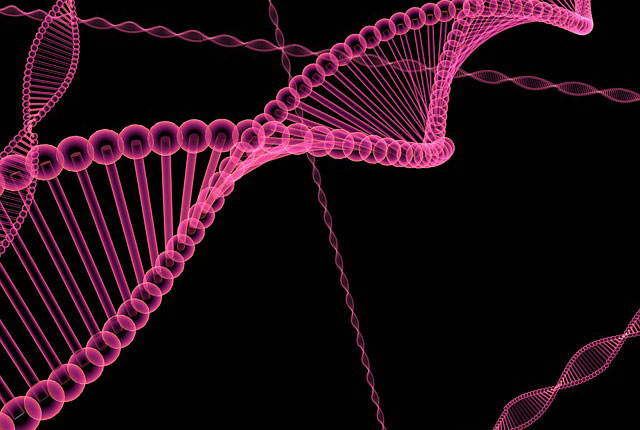
There is new hope for human patients with Duchenne muscular dystrophy. Results released in the journal Nature Communications describe a promising gene therapy performed on dogs. Twelve Golden Labrador dogs were subjected to a breakthrough gene therapy technology and, after two years, the dogs are healthy and appears to be illness-free. Researchers are optimistic about the implication of this study on humans.
Duchenne muscular dystrophy (or DMD) is a hereditary condition characterized by muscle weaknesses and muscle degeneration. Among nine types of muscular dystrophy, DMD is the most severe and life-threatening. Dystrophin protein is vital for muscles to function properly and the absence of this protein makes muscles fragile and easily damaged. At early stages, DMD will affect muscles in the shoulder, upper arms, thighs and hips that are vital to movement and balance. Patients experience muscle weaknesses by age 4 and then start losing the ability to walk by age 12. Later on, DMD will weaken the heart and respiratory muscles. For DMD cases, the average life expectancy is 26 years, with only a few patients living beyond 40.
Duchenne muscular dystrophy was named after French neurologist Guillaume Benjamin Amand Duchenne who described the illness in the 1860s. It was only in 1986 that researchers discovered a specific gene in the X chromosome that is responsible for normal dystrophin production. If a human has inherited the mutated or defective gene, that human can be ill with DMD or be a carrier of the defective gene.
Duchenne muscular dystrophy affects 1 in 5,000 boys at birth but is rare among girls. Girls, which have XX composition, are less likely affected than boys with XY composition as the dystrophin gene is located in the X chromosome. When a young girl inherits a defective dystrophin gene from one parent, she will be DMD-free if she gets a normal gene from her other parent or DMD-affected if she gets another defective gene. However, a DMD-free girl with a defective gene is still a carrier and can pass that gene to her children. On the other hand, it only takes one defective gene for boys to be affected with DMD.
There are no cures for Duchenne muscular dystrophy. Drugs, physical therapy and corrective surgery have been the primary tools for dealing with DMD but researchers are now pursuing newer technologies as possible treatment routes. The team of researchers from Genethon, the AFM-Telethon laboratory, INSERN (UMR 1089, Nantes) and the Royal Holloway of University of London collaborated for a promising gene therapy study conducted on twelve Golden Labrador dogs. The dogs were injected one-time with a gene for microdystrophin, a compressed version of dystrophin. Microdystrophin gene is used instead of dystrophin gene as the latter is too large to fit into a carrier virus that will be injected into a dog’s body.
Golden Labrador dogs are chosen for this study as these breed is prone to DMD. Injecting the microdystrophin gene is expected to restore a dog’s ability to normally produce dystrophin protein. The chosen dogs were not expected to live beyond six months but they are still alive two years since the study commenced. The dogs have shown improved ability to walk, run and jump. Buoyed by these positive results, researchers hope their study will pave the way in starting human clinical trials in the near future.
- Bulenox: Get 45% to 91% OFF ... Use Discount Code: UNO
- Risk Our Money Not Yours | Get 50% to 90% OFF ... Use Discount Code: MMBVBKSM
Disclaimer: This page contains affiliate links. If you choose to make a purchase after clicking a link, we may receive a commission at no additional cost to you. Thank you for your support!

Leave a Reply